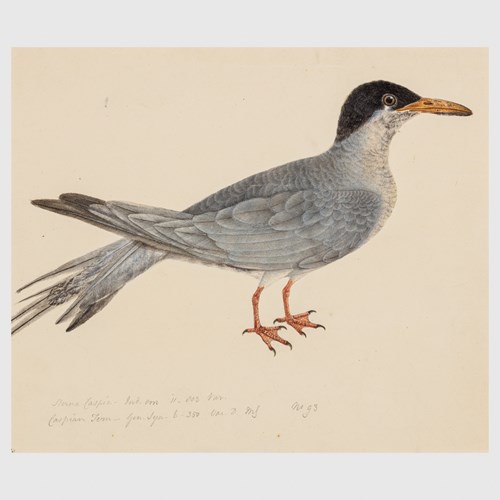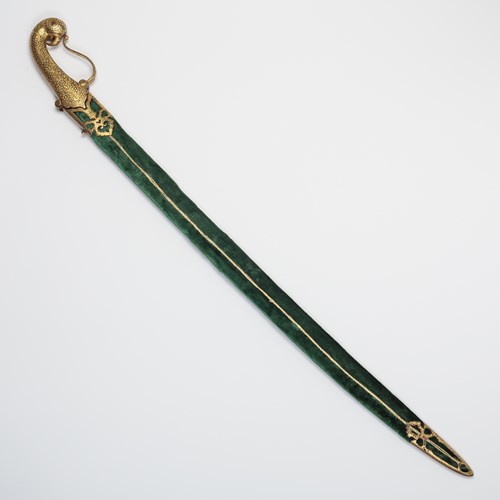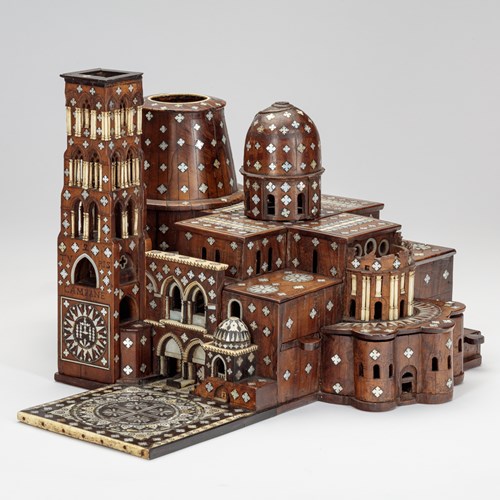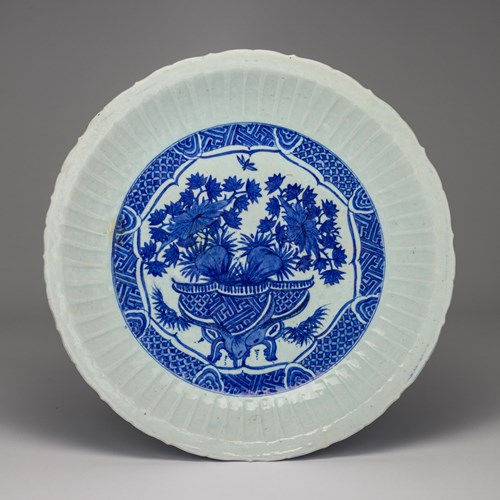Literature:
An enchanting mid-19th century egg tempera Melkite icon of St George, a sacramental gift given to Georges Prosper Anne Claret de la Touche (1852-1939) on the occasion of his first Communion at the age of 10 years old. This icon of high quality and unique provenance is an excellent example of a devotional image from the Melkite school – a term attributed to Arab-speaking Byzantine Melkite Christians in the Near East who identified with the “Greek” Catholic Church after the 18th Century. However, the term was first attributed to Arab icons by the Rumanian scholar, Virgil Candea, for the important exhibition of icons by (Catholic and Orthodox) Arab artisans at the Sursock Museum of Beirut in May, 1969 – the first institutional recognition that ‘there were schools of iconographers in the Middle East which followed the Greek [or Cretan] iconic tradition with the addition of Islamic elements.’1 With the establishment of newly built Catholic churches and a strong Jesuit missionary presence in the region, the 19th Century marked a shift from the highly decorated Melkite icons of the Aleppo school and the distinct physiognomy of the Byzantine tradition.2 The recipient of this icon, later a highly decorated WWI Major-General and Grand officier de la Légion d'honneur, was a cousin of the beatified nun and mystic, Louise-Marguerite Claret de La Touche, and member of the distinguished Breton family of that name.
The icon depicts St George in full heroic splendour, slaying the dragon atop his grey Arabian horse with the Christ-child in miniature dispensing Divine Grace from an oinochoe as they go. St George, traced to the popularised 11th Century Cappadocian legend, is a highly revered saint in the Eastern Churches and is said to have fought his battle with the dragon in St Saba, near Beirut. Indeed, the 19th Century Maronite Cathedral in Beirut is consecrated to him. The Arabic inscription – “Saint George”, or “Mar Gerges” – and stylised Arabesque motifs, combined with the rounded Italianate modelling in a modulated tempera, confirm its origin to be the Catholic Levant, likely Lebanon. Melkite icons, no less from this period, are seldom found out of situ. Of interest is the contextual French connection to the region established around the time of its production – and year of its dedication in 1862 – after the 1860 Druze-Maronite Conflict in Mount Lebanon, later an autonomous Maronite subdivision of the Ottoman Empire, that precipitated French military intervention and established the French presence in the country until it became a protectorate of the Third Republic in 1920. A diplomatic or military connection to the owner’s family is not inconceivable.
The dominant figures are displayed in the typical iconographic manner for a devotional icon of the saint: St George is shown in complete command of his action and own psycho-spiritual state, reflected in the calm, yet authoritative facial and manual expressions in contrast to the writhing chaos below. He receives his reward in the angelic presentation of a floral corolla; an inset castellated tower inhabited by three royal figures (safely foreshortened from the central action) welcome the two figures in mid-flight. These three can be identified as the rescued maiden, or princess, and her grateful parents – the father holding a brace of Petrine keys. The contour lines and a wide nimbus in gilt of fine brushstrokes establish an immediate visual sovereignty around the saint’s face and a restrained tri-tonal pigment scheme – ochre, scarlet, and cobalt – create a radiant effect. Indeed, the finely defined emanation extends beyond confinement and clear definition, democratising the image background and confirming the spiritual program into which all the figures are involved. Not only a light-source of a theophanic kind, the face of the saint casts a shadow that divides the upper register and the darker lower, into which the dragon is placed. Indeed, the harmonic, serpentine line of St George’s stead is inverted in the contorted spinal line of the dragon, delineated by gestures and accents, and is comparatively three-dimensional.
The composition, as in mediaeval tableaux, is horizontal or at least diagonal in emphasis, but the graceful action of the saint creates a verticality that connects all of the figures in the image. A Levantine harbour and its structures are included in this panorama. All is contingent on the central, energetic instance and its striking conductivity: the slaughtered dragon and its empty lair is connected through the diagonal crux-tipped lance to the angelic realm, via the aureole and crown of the newly fêted saint himself. Spiritually and visually, at least here, the heroism of George of Lydda, first as a valiant soldier from the 3rd Century Roman legions, unintentionally reveals the entire structure of the Christian cosmos. Thus he departs as the revered martyr to whom the icon is dedicated – and by whose young name bearer it was eventually received.
This composition appears to be drawn from earlier Russian icons, such as a 15th century Novgorod icon in the Hermitage Museum, St Petersburg (no. ЭРИ-244) and a late-17th-century example in the same collection (no. ЭРИ-448).
1 Krikor Dich. "Nicolas Sursock Museum Beirut : Melkite icons." Beirut: 1969.
2 Sheptytsky Institute. Star from the East: The Melkite Icons. Sheptytsky Institute, 2020. https://sheptytskyinstitute.ca/wp-content/uploads/2020/10/Star-from-the-East-The-Melkite-Icons.pdf.
More artworks from the Gallery






_T638772029064645252.jpg?width=500&height=500&mode=pad&scale=both&qlt=90&format=jpg)

